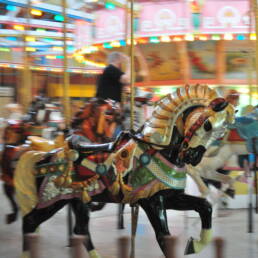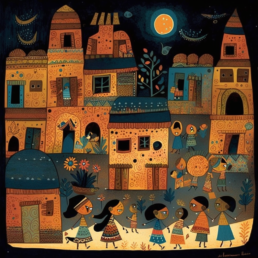During the brutal events of World War II, Tokyo Zoo slaughtered all the elephants to prevent casualties during the air raids. A letter from the schoolchildren of Japan showed up on Pandit Nehru’s desk a few years later. What happened next? Read on.
It was a trying time in Japan. Everyone was required to live and die for the country. You don’t belong on the land if you are against the war. Asakusa and Ueno in northern Tokyo, which was bombed out, saw thousands perish in fire.
Japan was grieving. But there was another problem. If the zoo’s predator’s broke free of their cages during bombing, they were deemed as dangerous. Ueno Zoo had three elephants back then. Two from India and one from Thailand.
In 1924, Tokyo City brought Jon and Tonkī, a male and female elephant, from India. They quickly rose to the top of the Ueno Zoo’s list of popular attractions, especially with kids. But there was no mercy. Out of fear, Mayor of Tokyo ordered to kill them.
They attempted to euthanize them with needles, but the elephants’ hides proved to be too thick. They attempted to poison the food, but the elephants were too smart to eat them. Having no other option left, in August 1943, all the elephants were starved to death.
Tragedies unfolded in wartime Ueno. The grownups had no time to grieve for the petty animals, but the children were in heavy hearts. One day the girl students of Negishi primary school wrote a very moving letter to India’s first Prime Minister, Nehru.
The letter reads – “At Tokyo zoo we can only see pigs and birds which give us no interest. It is a long cherished dream for Japanese children to see a large, charming elephant. Can you imagine how we want to see the animal?”
He received about 800 such letters. In order to get an elephant to the Ueno Zoo, Pandit Nehru directed the External Affairs Ministry to immediately meet with the princely states and organize funds and transportation.
He named the elephant Indira, after her beloved daughter. In September 1949, as a peace ambassador, Indira was taken to the Tokyo Zoo, where she served as an emblem of the friendship between Japan and India until her death.
Interestingly, at the same time, there was a widespread panic that air raids could unleash lethal animals from zoos in the center of cities across Europe. Following that, Berlin, Belfast and London saw zoo animals being slaughtered out of fear.
However, kids in Berlin also reacted similarly. There was no elephant to see in the Berlin zoo, which was something the kids lamented heavily. They wrote letters to secure an elephant for Berlin once more. Once again, the letters got to Nehru.
Nehru pledged to deliver an elephant to the Berlin kids. A 3-year-old baby female elephant made her way to Berlin in June 1951 as a gift from India. It was given the name Shanti, which means peace.
The story would be unfinished without reliving the heartfelt letter Nehru wrote to the Japanese children. The letter reached Tokyo along with Indira, the elephant. A message to remember.
“Dear Children, I am very glad to be sending you one of our elephants, as you wished. It is a good elephant, very well brought up, endowed with all the good virtues. Please do not treat it as a present from me, but as one from the children of India to the children of Japan”
“…Children resemble each other in many ways everywhere in the world. It is only when you begin to grow up that you get different opinions. Unhappily, when that happens, you often come into conflict”
“…We must put an end to these clashes between grown-ups. It is my hope that, when they are older, the children of India & Japan will not serve only their own countries, but also the cause of peace and co-operation in the whole of Asia and the world”
“…So you must see in this elephant called Indira a messenger of the love and good-will of the children of India. Elephants are brave, patient, strong and yet gentle. I hope that we shall all come to be like that”
Sources:
- Starving the Elephants: The Slaughter of Animals in Wartime Tokyo’s Ueno Zoo
- Frederick S. Litten, The Asia Pacific Journal, https://apjjf.org/-Frederick-S.-Litten/3225/article.html#
- Koehl, Dan. Indira, Asian elephant (Elephas maximus) located at Ueno Zoo in Japan. Elephant Encyclopedia. https://www.elephant.se/database2.php?elephant_id=2859.
- Lorenz Hagenbeck, Animals Are My Life,The Bodley Head.
- JAPAN: The Charming Elephant. July 04, 1949 The Time. https://content.time.com/time/subscriber/article/0,33009,888544,00.html
- Indira presented to Jap Premier. Oct 1, 1949, Indian Express.




